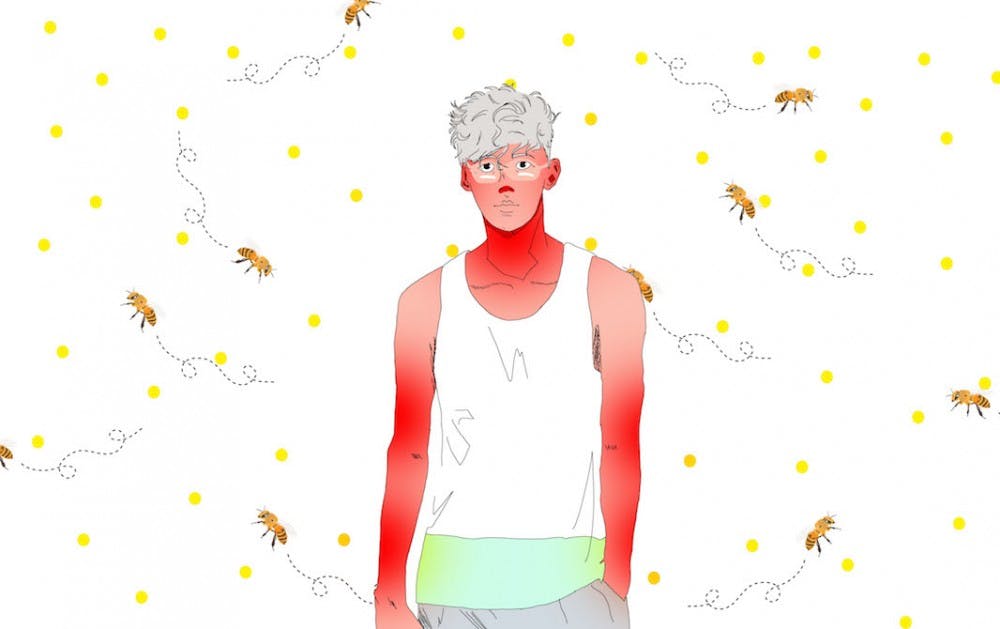As the temperature slowly but surely rises, ASU students should take responsibility for their own health and prepare for the intensity of summer by taking precautions such as wearing sunscreen and staying hydrated when outdoors.
However, the responsibility is not theirs alone.
ASU also has a responsibility towards student health and wellness and should introduce more initiatives to warn students of the risks and reality of Arizona summers.
Currently, the University promotes healthy eating decisions and frequent physical exercise, but the Health and Wellness website does not have any pages dedicated to adapting to the dry heat and sun intensity health of Arizona.
Floris Wardenaar, an assistant professor at ASU’s School of Nutrition and Health Promotion, said that it is often difficult for students to acclimatize to the heat.
“All students that are not used to the heat and do not regularly exercise for outside 30 minutes or more should be aware of the fact that the heat is doing something with you,” Wardenaar said. “A.C. in our lives helps us through the summer, but it also withholds us from getting better acclimated, whereas frequent exercise may help us to get better prepared for the extreme summer months.”
Much of the action at ASU takes place outside, such as event tabling, live music performances, charity events and exercise. ASU also promotes outdoor activities in the Tempe area. While the temperatures are bearable through most of the year, it gradually gets more difficult to stay outside for long periods of time.
“Because the weather is so nice through the whole year, there’s a really outdoor focus, like going hiking and stuff,” Wardenaar said. “Exercising in dry heat is a completely different story itself because it’s not convenient to be commuting in this extreme heat, but if you start exercising that’s totally different. Each year a lot of people need to be rescued while climbing and hiking in the heat.”
In 2016 alone, there were 130 heat-related deaths counted by the Maricopa County Department of Public Health. Additionally, there were 154 rescues off the Echo Canyon trail on Camelback Mountain alone from 2010 to 2013.
“There is a frequent advice of drinking plenty of water and I think in a sense it is true, but it’s not very specific and people really don’t know what ‘plenty’ is,” Wardenaar said. “If you only drink water, absorption is not optimal, so if you eat little bites then the electrolytes in the food will help you to absorb the water better. These kinds of things people can take into account when they go for a longer hike.”
Despite the harrowing statistics as well as the proximity to great hiking spots such as South Mountain or Papago Park, little is done by ASU to warn students of safe health practices during the hotter months.
“A school that affiliates itself with the inferno and Sun Devils would address the heat issue properly on its website,” Wardenaar said. “Maybe that’s something the College of Health Solutions or I, personally, can take the lead on in the future.”
Fortunately, research on heat acclimatization will be conducted in the upcoming months in order to provide better guidelines for students on how to handle the heat.
“This summer, what we want to do is a heat acclimation study, so we are looking for prospective student-athletes from the area that are willing to come a little bit earlier to be part of our study,” Wardenaar said.
As a university dedicated to promoting health and wellness, it is imperative to also educate students on the dangers of the harsh local environment. Ultimately, the cause for keeping students safe at ASU in the physical environment is one that should be taken up by all programs across all campuses.
“This a multipurpose call to create safe health practices but also create a sustainable system in which different schools and departments within ASU can contribute to this topic from their own perspective,” Wardenaar said. “Together we can not only reach our student population best, but we can also create collective ownership to deal with this problem.”
Reach the columnist at kalbal@asu.edu or follow @karish2021on Twitter.
Editor’s note: The opinions presented in this column are the author’s and do not imply any endorsement from The State Press or its editors.
Want to join the conversation? Send an email to opiniondesk.statepress@gmail.com. Keep letters under 500 words and be sure to include your university affiliation. Anonymity will not be granted.
Like The State Press on Facebook and follow @statepress on Twitter.




